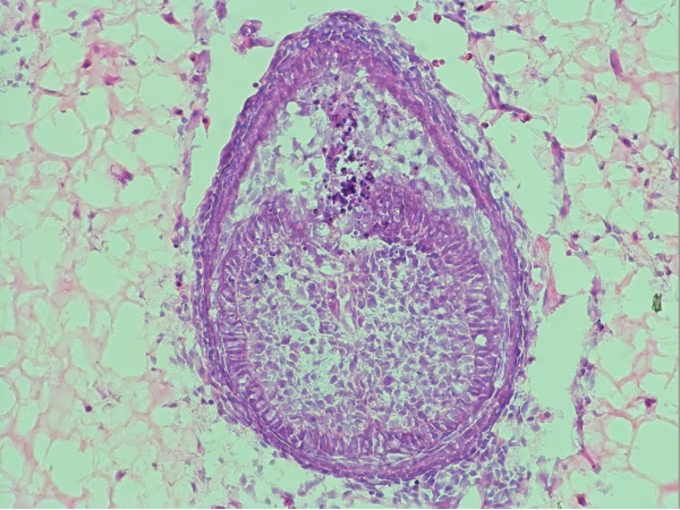For decades, the idea of naturally regrowing human teeth has belonged more to science fiction than science. But now, breakthroughs from research teams around the world suggest that the once-impossible dream of biological tooth regeneration may soon become a clinical reality. From antibody-based therapies to stem cell–driven growth, the race to restore natural smiles is accelerating — and experts believe it could transform dentistry within the next decade.
At the forefront of this revolution is Dr. Katsu Takahashi and his team at the Medical Research Institute Kitano Hospital in Osaka, Japan. Their work centers on an antibody-based treatment designed to stimulate tooth growth in individuals suffering from anodontia, a rare genetic condition in which teeth never develop. Instead of relying on implants or dentures, this therapy uses targeted antibodies to suppress a protein that naturally inhibits tooth growth. The result: dormant tooth buds begin to awaken, allowing new teeth to form naturally.
Takahashi’s research has already moved into human clinical trials, marking a historic step forward. If the results continue to show safety and effectiveness, the treatment could be available to patients by the end of the decade. “We’re not just replacing missing teeth — we’re giving people back their own natural smiles,” Takahashi has said. His work could have global implications, especially for children born without certain teeth and adults who lose them due to injury or decay.
Meanwhile, on the other side of the Pacific, Dr. Pamela Yelick and her team at Tufts University School of Dental Medicine in Massachusetts are taking a very different — but equally fascinating — approach. In late 2024, her group successfully grew human-like teeth inside pigs, using a combination of human and pig cells. This cross-species experiment may sound unusual, but it offers a unique biological advantage.
Unlike humans, pigs regrow their teeth multiple times throughout their lives. By harnessing this regenerative ability, Yelick’s team has been able to mimic the complex biological processes that guide natural tooth formation. The next goal, she explains, is to “prompt cells in the human jaw to grow new teeth — without relying on any animal cells at all.” If successful, this method could provide a self-sustaining, regenerative solution to tooth loss — one that taps into the body’s own cellular potential rather than using artificial materials.
At the University of Washington, another breakthrough is reshaping the field of regenerative dentistry. Dr. Hannele Ruohola-Baker, professor of biochemistry and associate director at the Institute for Stem Cell and Regenerative Medicine, has successfully generated dental pulp stem cells directly from human stem cells extracted from donated wisdom teeth. Her work focuses on mapping what she calls the “molecular blueprint” of human tooth development.
“We aim to uncover the molecular blueprint of human tooth formation and recreate that process in the laboratory,” Ruohola-Baker said. Unlike other methods that rely on existing dental tissues, her approach creates tooth-forming cell types from scratch, guiding them along their natural developmental pathways. This means scientists can not only grow tooth-like structures in the lab but also understand, at a genetic and molecular level, how each part of a tooth — from enamel to dentin — forms in the first place.
This deeper understanding could pave the way for fully customized biological tooth replacements, tailored to an individual’s own DNA and cellular makeup. In the long run, it may even eliminate the need for root canals, crowns, and implants altogether.
What makes all of these breakthroughs particularly exciting is how quickly the field is advancing. Just a few years ago, the idea of regenerating human teeth was considered too complex to achieve in a lab setting. But as Ruohola-Baker notes, “Momentum in this field is accelerating, heralding a future in which biological tooth repair or replacement becomes a realistic option within the coming decade.”
If her prediction proves correct, dentistry as we know it could change forever. Imagine a future where losing a tooth no longer means choosing between a bridge or an implant, but simply waiting for your body to grow a new one. No metal, no drilling — just nature, reactivated.
The implications go beyond cosmetic dentistry. Regrown teeth could dramatically reduce oral health complications associated with bone loss, gum disease, and nerve damage. For millions of people worldwide who rely on dentures or costly dental procedures, these treatments could restore not only teeth but also confidence and comfort.
Each of these scientific efforts — from Osaka to Boston to Seattle — reflects a shared vision: restoring one of nature’s most intricate organs through the body’s own regenerative power. While challenges remain, including the time and cost of scaling such treatments for global use, researchers are optimistic that what’s now happening in labs will soon move into clinics.
For now, these pioneering studies are giving both patients and doctors something they haven’t had in a long time — hope. The hope that in the near future, tooth loss may no longer be permanent. The hope that instead of artificial replacements, people will have the chance to grow back their own, living teeth.
If that day comes — and the evidence suggests it’s not far away — dentistry won’t just be about fixing smiles anymore. It’ll be about regrowing them.

